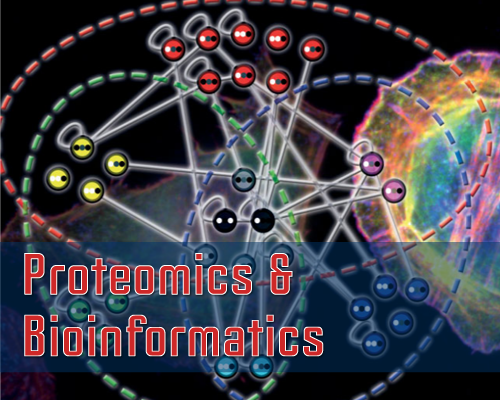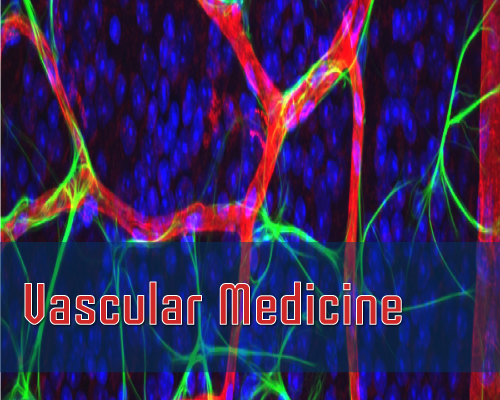Abdelkader Boukerrouche*
Department of Digestive Surgery, Hospital of Beni-Messous, University of Algiers, Algiers, Algeria
*Address for Correspondence: Abdelkader Boukerrouche, Department of Digestive Surgery, Hospital of Beni-Messous, University of Algiers, 16002 Algiers, Algeria, Tel: +213-661-22-72-98; Fax: +213-21-93-13 10; E-mail: [email protected]
Dates: Submitted: 27 October 2017; Approved: 01 November 2017; Published: 21 November 2017
Citation this article: Boukerrouche A. Surgery of Giant Liver Hemangioma: Enucleation versus Resection -A Brief Review. Int J Hepatol Gastroenterol. 2017;3(3): 068-070.
Copyright: © 2017 Boukerrouche A. This is an open access article distributed under the Creative Commons Attribution License, which permits unrestricted use, distribution, and reproduction in any medium, provided the original work is properly cited.
Keywords: Giant liver hemangioma; Resection; Enucleation; Morbidity
Abstract
Hemangioma is the most common primary tumor of the liver and it is often diagnosed incidentally.
Giant liver hemangioma is defined by a diameter larger than 5 cm. Expectant management is justified in patients with asymptomatic or non-complicated giant liver hemangioma. Surgery remains the most effective therapeutic modality for treatment. Surgical excision is indicated in symptomatic or complicated giant liver hemangioma, rapid growth in size or when diagnosis remains inconclusive. Both enucleation and resection can be employed as surgical procedure to treat giant liver hemangioma. However most authors preferred and advocated enucleation than the anatomic resection. This preference for enucleation lies on the reported results of studies which demonstrated that enucleation was safer, quaker surgical procedure to remove liver giant hemangioma with lower complication and less blood loss.
Introduction
Hemangioma is the most common primary tumor of the liver. The Liver hemangiomas are usually diagnosed incidentally, and most of them are small (<1 cm in diameter). The hemangioma is qualified giant when having a diameter larger than 5 cm.
Observation
Asymptomatic giant liver hemangiomas even very large lesions can be safely observed with low rate of adverse events [1]. However, the indications of surgery for giant liver hemangioma are well defined. When surgery, which is the most effective treatment procedure, is indicated, giant liver hemangioma can be excised by resection or enucleation with a low risk of morbidity and mortality [1-3].
Enucleation versus resection
The management of Giant Liver Hemangioma (GLH) varies from observation to a variety of nonsurgical and surgical procedures. Asymptomatic Giant Liver Hemangioma (GLH) is managed conservatively even in patients with extremely large hepatic hemangiomas by supervision through regular imaging control with lower risk of adverse events [1]. However, surgical options including enucleation, liver resection, and liver transplantation can be considered to treat GLH surgically. These surgical procedures are more radical than the nonsurgical methods and allow histologic examination of the specimen [2]. Surgical excision is indicated in case of symptomatic or complicated lesions. Thus symptomatic giant hemangioma with severe progressive symptoms not medically controlled, Consumptive coagulopathy or Kasabach-Merritt syndrome which is characterized by thrombocytopenia secondary to platelet sequestration and destruction within the hemangioma, and spontaneous rupture with bleeding are commonly the most indication for surgery [3-8]. The rapid growth tumor is considered as an indication for surgery however a minimum of 25% increase in largest diameter over a period of 6 months is required to justify surgical treatment for asymptomatic hemangiomas [7,9-13]. Diagnostic uncertainty with inability to exclude malignancy was another criterion for surgery, but the diagnostic certainty is currently established in most cases with combined use of advanced various imaging techniques [12-14].
Although there is no agreement on the optimal management for giant liver hemangioma, surgery remains the most effective therapeutic modality for treatment [15]. When surgery is indicated, the surgical excision is the most effective procedure to treat hemangioma. Thus resection and enucleation are the two most used surgical procedures to surgically treat liver hemangioma with very low associated morbidity and mortality. Some authors advocate liver resection [16,17], but others advocate enucleation [2,18,19].
Liver resection is the first surgical procedure used to treat hemangioma. Since, Couinaud defined the segmental anatomy and the avascular planes; performing hepatectomy had become a safer surgical procedure. Hepatic resection can be anatomic or nonanatomic. However, anatomic resections are preferred by authors because it is associated with reduced intraoperative blood loss and reduced need to red cell transfusion [12,20]. Originally, resection was the surgical procedure of choice to treat liver hemangioma until the first description of enucleation technique by Alper, et al. [2]. The enucleation technique is based on the macroscopic observation that hemangiomas are encapsulated by a dissection plane separating hemangioma and liver parenchyma [21]. The presence of this definite and easily separable cleavage plane makes ligation of vessels entering or leaving the hepatic hemangioma much simpler and decreases the risk of intraoperative bleeding and blood loss. Also the absence of bile ducts in the enucleation dissection plane reduces the risk of postoperative bile leak. Moreover enucleation preserves more healthy liver parenchyma avoiding unnecessary parenchyma loss for the treatment of benign tumor [7,15]. Compared to peripherally located hemangiomas, enucleation of centrally located hemangiomas is more likely associated with longer operative time and higher rate of blood loss and transfusion [22]. However, the risk of bleeding and blood transfusions is to be more related to hemangioma size than to the type of surgical technique [11,23]. Thus blood transfusion was more needed in patients with hemangiomas larger than 10 cm in size [12].
The choice of resection or enucleation of Giant Liver Hemangioma (GLH) is mainly dependent on the multiple factors. The existence of easily recognizable and cleavable fibrous tissue separating hemangioma and normal liver parenchyma [11]. The location of lesion, enucleation is indicated in peripheral and right sided located hemangioma and resection is more preferred in centrally located lesion .The tumor size can influence the type of surgical technique .As previously mentioned, very large hemangioma (>20 cm) is associated with high risk of operative bleeding and blood loss and in such condition surgical resection is more suitable [24,25]. In order to preserve more normal liver parenchyma, enucleation is a convenient surgical method to treat multiple liver hemangiomas [11,26,27]. In emergency situation as bleeding and ruptured hemangioma with hemoperitoneum, liver resection is more preferable to avoid aggravation of a serious situation and to minimize the risk of operative complications [15]. When the hemangioma is located near or compresses large vessels with high risk of operative severe bleeding, resection is more suitable [21-24]. Also, the choice to perform enucleation or resection depends partly on the preference and the technical skills of surgeon [26,27].
Regarding the progress made in liver surgery, enucleation meets the requirement of precise liver surgery which is precision, minimal invasiveness, and effectiveness and it can thus be adopted by more and more surgeons [28]. Recent reported meta-analyses [29,30] comparing outcomes of enucleation versus those of anatomic resection of GLH concluded that, there was no surgery-related death in either the enucleation or the anatomic resection procedure, and enucleation was associated with significantly lower blood loss, lower surgical time, and lower risk of complications. Therefore, performing enucleation is simpler than resection with reduced operative blood loss due to the presence of easily cleavable dissection plane between hemangioma and normal liver parenchyma, and with lower morbidity [31]. Enucleation is advocated by most authors because it is safer and quiker with lower overall complications and less blood loss [26,32].
Conclusion
Giant liver hemangioma can be removed safely by either enucleation or anatomic resection. Enucleation preserves more normal liver parenchyma, decreases operative blood loss and reduces postoperative complications. Therefore enucleation may become the preferable choice for surgeons and it should be the preferred surgical procedure for suitable lesions.
References
- Bajenaru N, Balaban V, Savulescu F, Campeanu I, Patrascu T. Hepatic hemangioma - review. J Med Life. 2015; 8: 4-11. https://goo.gl/zczq8n
- Alper A, Ariogul O, Emre A, Uras A, Okten A. Treatment of liver hemangiomas by enucleation. Arch Surg. 1988; 123: 660-661. https://goo.gl/HKGmxQ
- Hoekstra LT, Bieze M, Erdogan D, Roelofs JJ, Beuers UH, van Gulik TM. Management of giant liver hemangiomas: an update. Expert Rev Gastroenterol Hepatol. 2013; 7: 263-268. https://goo.gl/1ia6A6
- Yedibela S, Alibek S, Müller V, Aydin U, Langheinrich M, Lohmüller C, et al. Management of hemangioma of the liver: surgical therapy or observation? World J Surg. 2013; 37: 1303. https://goo.gl/VF1Q9t
- Hall GW. Kasabach-Merritt syndrome: pathogenesis and management. Br J Haematol. 2001; 112: 851-862. https://goo.gl/Td4YH5
- Terkivatan T, Vrijland WW, Den Hoed PT, De Man RA, Hussain SM, Tilanus HW, et al. Size of lesion is not a criterion for resection during management of giant liver hemangioma. Br J Surg. 2002; 89: 1240. https://goo.gl/DBE7Z8
- Ozden I, Emre A, Alper A, Tunaci M, Acarli K, Bilge O, et al. Long term result of surgery for liver hemangiomas. Arch Surg. 2000; 135: 978-981. https://goo.gl/32e1Jc
- Kammula US, Buell JF, Labow DM, Rosen S, Millis JM, Posner MC. Surgical management of benign tumors of liver. Int J Gastrointest Cancer. 2001; 30: 141-146. https://goo.gl/pyg3Cr
- Pietrabissa A, Giulianotti P, Campatelli A, Di Candio G, Farina F, Signori S, et al. Management and follow-up of 78 giant hemangiomas of the liver. Br J Surg. 1996; 83: 915. https://goo.gl/bEkRfH
- Meguro M, Soejima Y, Taketomi A, Ikegami T, Yamashita Y, Harada N, et al. Living donor liver transplantation in a patient with giant hepatic hemangioma complicated by Kasabach-Merritt syndrome: report of a case. Surg Today. 2008; 38: 463. https://goo.gl/4fVuxZ
- Giuliante F, Ardito F, Vellone M, Giordano M, Ranucci G, Piccoli M, et al. Reappraisal of surgical indications and approach for liver hemangioma: single-center experience on 74 patients. Am J Surg. 2011; 201: 741-48. https://goo.gl/WTWbUe
- Mezhir JJ, Fourman LT, Do RK, Denton B, Allen PJ, D'Angelica MI, et al. Changes in the management of benign liver tumours: an analysis of 285 patients. HPB. 2013; 15: 156. https://goo.gl/TfwX1M
- Weimann A, Ringe B, Klempnauer J, Lamesch P, Gratz KF, Prokop M, et al. Benign liver tumors: differential diagnosis and indications for surgery. World J Surg. 1997; 21: 983-990. https://goo.gl/KsJqVF
- D’Angelica M. what is riskier for the patient with an asymptomatic large hepatic hemangioma: observation or the surgeon? World J Surg. 2013; 37: 1313-1314. https://goo.gl/YBDMGT
- Yoon SS, Charny CK, Fong Y, Jarnagin WR, Schwartz LH, et al. Diagnosis, management, and outcomes of 115 patients with hepatic hemangioma. J Am Coll Surg. 2003; 197: 392-402. https://goo.gl/yhTTzd
- Borgonovo G, Razzetta F, Arezzo A, Torre G, Mattioli F. Giant hemangiomas of the liver: Surgical treatment by liver resection. Hepatogastroenterology 1997; 44: 231-244. https://goo.gl/U2VS6E
- Brouwers MA, Peeters PM, de Jong KP, Haagsma EB, Klompmaker IJ, Bijleveld CM, et al. Surgical management of giant hemangioma of the liver. Br J Surg. 1997; 84: 314-316. https://goo.gl/pAxU1R
- Baer HU, Dennison AR, Mouton W, Stain SC, Zimmermann A, Blumgart LH. Enucleation of giant hemangiomas of the liver. Technical and pathologic aspects of a neglected procedure. Ann Surg. 1992; 216: 673-676. https://goo.gl/Ksi7TU
- Kuo PC, Lewis WD, Jenkins RL. Treatment of giant hemangiomas of the liver by enucleation. J Am Coll Surg. 1994; 178: 49-53. https://goo.gl/Dg7N3H
- Patriti A, Graziosi L, Sanna A, Gullà N, Donini A. Laparoscopic treatment of liver hemangioma. Surg Laparosc Endosc Percutaneous Tech. 2005; 15: 359. https://goo.gl/P1u5sM
- Demiryürek H, Alabaz O, Ağdemir D, Sungur I, Erkoçak EU, Akinoğlu A, et al. Symptomatic giant cavernous hemangioma of the liver: is enucleation a safe method? A single institution report. HPB Surg. 1997; 10: 299-304. https://goo.gl/uBdkha
- Fu XH, Lai EC, Yao XP, Chu KJ, Cheng SQ, Shen F, et al. Enucleation of liver hemangiomas: is there a difference in surgical outcomes for centrally or peripherally located lesions? Am J Surg. 2009; 198: 184-187. https://goo.gl/KmUpBi
- Longeville JH, de la Hall P, Dolan P, Holt AW, Lillie PE, Williams JA, et al. Treatment of a giant hemangioma of the liver with Kasabach-Merritt syndrome by orthotopic liver transplant a case report. HPB Surg. 1997; 10: 159. https://goo.gl/8BwLhh
- Hamaloglu E, Altun H, Ozdemir A, Ozenc A. Giant liver hemangioma: therapy by enucleation or liver resection. World J Surg. 2005; 29: 890-893. https://goo.gl/o3NNhY
- Lerner SM, Hiatt JR, Salamandra J, Chen PW, Farmer DG, Ghobrial RM, Busuttil RW. Giant cavernous liver hemangiomas: effect of operative approach on outcome. Arch Surg. 2004; 139: 818-821. https://goo.gl/AbnR7Q
- Dong J, Yang S, Zeng J, Cai S, Ji W, Duan W, et al. Precision liver surgery. Chin J Dig Surg. 2014; 13: 405-411. https://goo.gl/v8dsu9
- Liu Y, Wei X, Wang K, Shan Q, Dai H, Xie H, et al. Enucleation versus Anatomic Resection for Giant Hepatic Hemangioma: A Meta-Analysis. Gastrointest Tumors. 2016; 3: 153-162. https://goo.gl/v1qUY1
- Cheng WL, Qi YQ, Wang B, Tian L, Huang W, Chen Y. Enucleation versus hepatectomy for giant hepatic hemangiomas: a meta-analysis. Ann R Coll Surg Engl. 2017; 99: 237-241. https://goo.gl/UFP4oA
- Zimmermann A, Baer HU. Fibrous tumor-liver interface in large hepatic neoplasms: its significance for tumor resection and enucleation. Liver Transpl Surg. 1996; 2: 192-199. https://goo.gl/DvB6R5
- Gedaly R, Pomposelli JJ, Pomfret EA, Lewis WD, Jenkins RL. Cavernous hemangioma of the liver: anatomic resection vs. enucleation. Arch Surg. 1999; 134: 407-411. https://goo.gl/paE1Je
- Singh RK, Kapoor S, Sahni P, Chattopadhyay TK. Giant hemangioma of the liver: is enucleation better than resection? Ann R Coll Surg Engl. 2007; 89: 490-493. https://goo.gl/dr2Pje
- Qiu J, Chen S, Wu H. Quality of life can be improved by surgical management of giant hepatic hemangioma with enucleation as the preferred option. HPB (Oxford). 2015; 17: 490-494. https://goo.gl/oeQNhV
Authors submit all Proposals and manuscripts via Electronic Form!




























